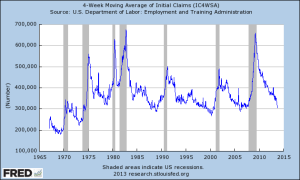As we move into the second week of the shutdown—and another day closer to running out of room to maneuver around the debt ceiling—cracks are starting to appear.
On the political level, there’s an apparent disconnect between a White House potentially willing to accept a short-term rise in the debt ceiling and a Senate holding out for a longer-term deal on the Democrat side. In the Virginia governor’s race, the Democrat appears to be gaining an edge from the shutdown. The Senate Democrats are talking about passing a clean continuing resolution themselves, rather than waiting for one from the House Republicans—who have been taunting them about their unwillingness to force Democrat senators to make a potentially tough vote. In short, we’re seeing the usual political circus.







